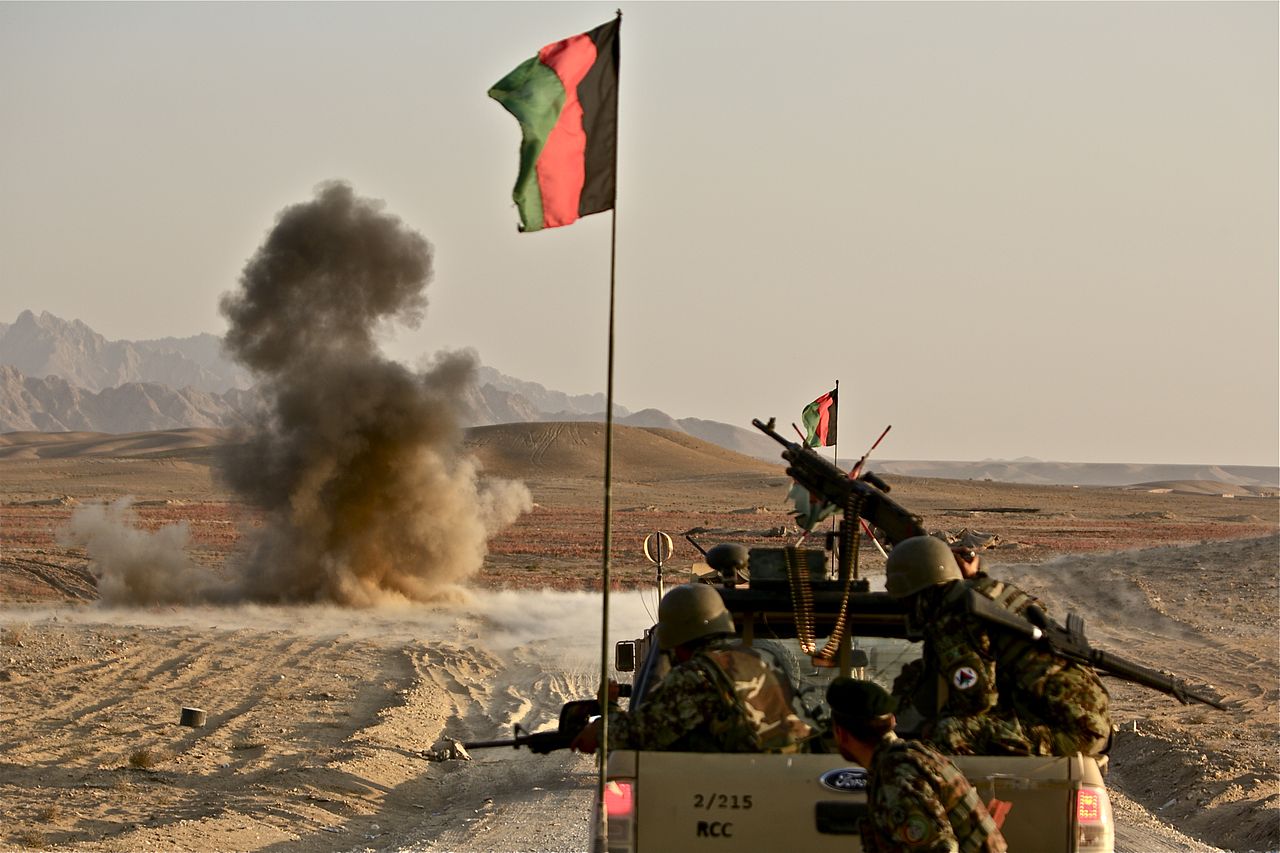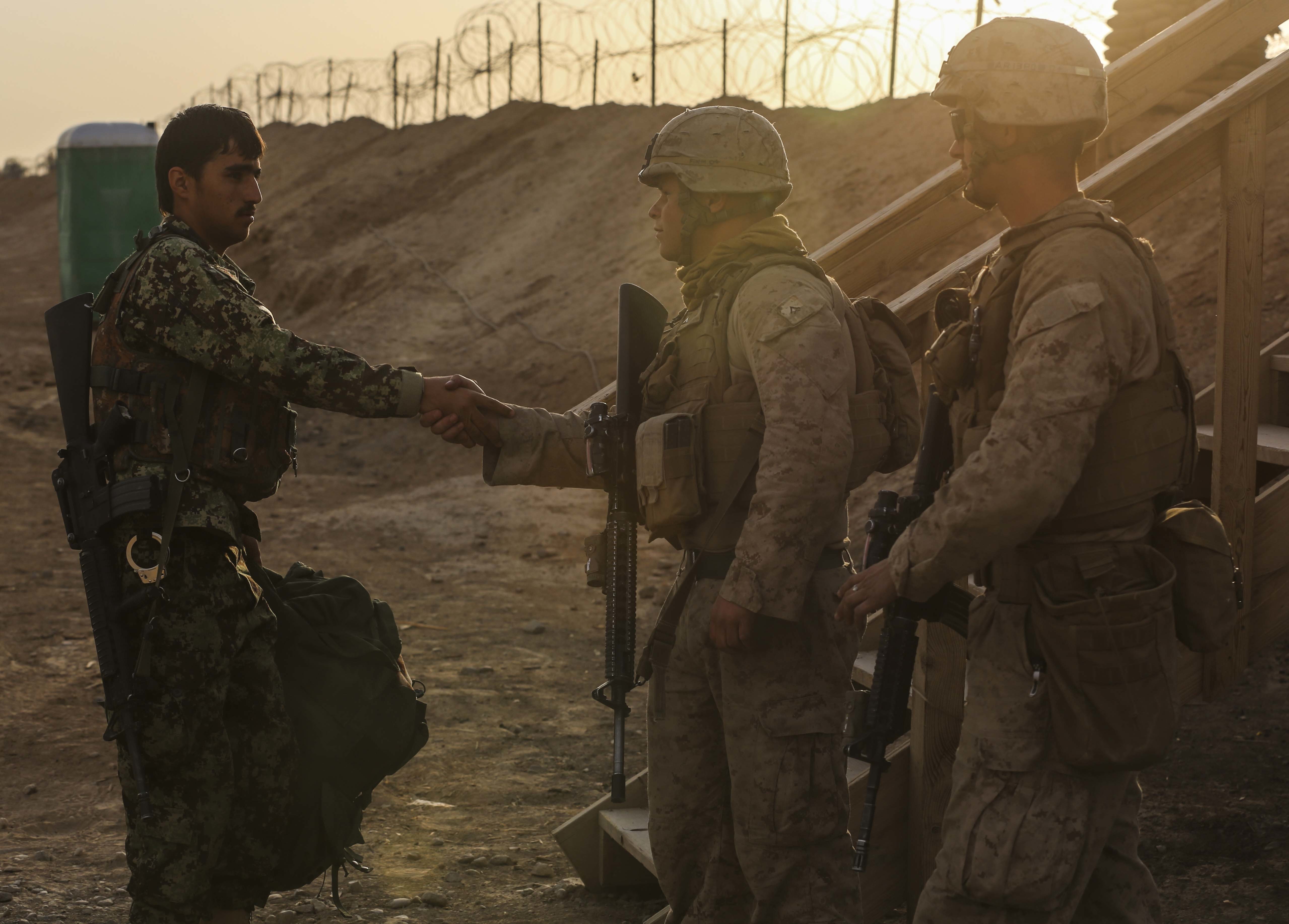
Stabilizing the battlefield is the first step in convincing the Taliban that the price is too high to continue fighting and to enter into negotiations for an Afghan-led peace deal, a new report from the Center for New American Security recommends.
Speaking on Tuesday, author Christopher Kolenda, “Once you announce a timeline [of withdrawal or drawdown], you lose your leverage.”
Now with the Taliban having gained more ground in the past year, with poppy production increasing in Helmand Province and safe havens for the Taliban and their allies in the Haqqani Network still existing in Pakistan, “we haven’t got to that point yet.”
He added if that kind of drawdown or withdrawal announcement is made again the Taliban leadership feels it can “just hang on another year” or so to regain control over more of the country.
“Fighting and negotiating are parallel tracks,” Ronald Neumann, the American ambassador to Afghanistan from 2005-2007, said. “Our support has to be for” Afghan President Ashraf Ghani in going forward in a setting out a peace process
Yet, after 15 years of fighting, “there is no common U.S.-Afghan strategy … to bring [the fighting] to a conclusion,” Kolenda said.
To break down the silos between defense, state, USAID and the intelligence community in the American effort, Neumann said a single person [civilian] in Kabul should be setting policy instead of “a cacophony of voices” coming from Washington trying to influence events in Afghanistan. “Afghanistan has suffered repeatedly from the 6,000-mile screwdriver,” micromanaging the situation.
“Washington is always full of ideas of how to do things … unencumbered without dealing with foreigners.”
Kolenda said Gen. John Nicholson’s call for “a few thousand” more troops from the United States or coalition partners to do more advisory missions below the corps level with Afghan aviation and special forces units would help stabilize the battlefield and eventually allow the Afghans to chip away at areas the Taliban controls.

Right now as fractious as the Taliban may appear, its mid-level leaders are showing no indication they are willing to defect from the organization’s highest leaders’ direction, he added.
In assessing Afghanistan’s neighbors, Kolenda said, Pakistan is worried about Kabul becoming a client state of India. It believes as “violence in Afghanistan goes up, violence in Kashmir goes down.” Kashmir has been a source of fighting between India and Pakistan since both gained independence in the late 1940s. Both maintain large forces in the disputed province.
Islamabad will continue to offer safe havens to the Taliban as long as they do not take that fight into Pakistan. Although it is, “a major, non-NATO ally” of the United States, Pakistan has resisted pressure from Washington to change course in matters it considers vital. This included surviving severe sanctions imposed on it over its nuclear weapons program
At the same time, the gulf states have also provided financial support for the Taliban operating from Pakistan as a means to offset Iranian influence in western Afghanistan. Pakistan and the gulf states are largely Sunni while Iran is Shia.
Iran views Afghanistan as “its near abroad.”
In short, “predatory actors are feeding the instability” in Afghanistan.
While Ghani and Chief Executive Officer Abdullah Abdullah both advocate reform, their views of how to achieve it differ.
Corruption in Afghanistan runs the gamut from low-level shakedowns at checkpoints to a kleptocracy to high levels inside the security forces, provincial and national governments.
As one example of corruption at high levels, Kolenda said a brigadier generalship could be bought for $100,000 with the idea that time in office will cover that expense and return a profit to the holder. “You can’t just dismantle [corruption] overnight.”
“Promote people who fight; we know who they are,” Neumann added.
He added the United States should remember that corruption was part of the Big City Boss history of this country, but some good came from its patronage system where goods and services flowed down relatively efficiently in exchange for votes. In a kleptocracy, money goes to the top with nothing flowing down. In Afghanistan, the matter is more complicated by the influence that warlords continue to have at all levels of government.
As for rooting out corruption in other ways, he added, “You have to hurt individuals, not systems.” One way to do that would be to “have the IRS go after Afghans who have significant holdings in the United States.”





